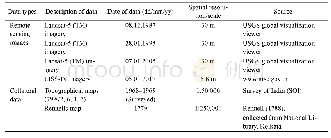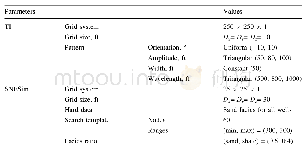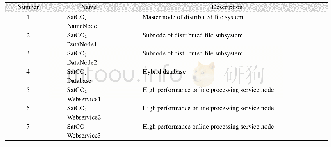《Table 1 Fluid inclusion microthermometric data for the Jiama deposit》
 提示:宽带有限、当前游客访问压缩模式
提示:宽带有限、当前游客访问压缩模式
本系列图表出处文件名:随高清版一同展现
《"Fluid Evolution and Ore-forming Processes of the Jiama Cu Deposit, Tibet: Evidence from Fluid Inclusions"》
Note:Th-Homogenization Temperature;Tice-Final ice melting temperature;Ts-Solid dissolution temperature for type ii-1 fluid inclusions;Tv-Vapor disappearance temperature for ii-2 fluid inclusions.
In the early hydrothermal stage,the first boiling took place,inferred from the coexistence of liquid-and vapordominated fluid inclusions in wollastonite of the skarns,type A quartz veins in the porphyry and type a veins in the hornfels(Fig.6a–b,g–h).Fluid evolution led to development of a vapor phase in the 245–417°C temperature range,a low to moderate salinity(0.9–22.5wt%)liquid phase in the 243–455°C temperature range,and a high-salinity(30.2–43.4 wt%)liquid phase in the240–418°C temperature range(Table 1,Fig.8).The second boiling event took place in the late hydrothermal stage,inferred from the coexistence of liquid-and vapordominated fluid inclusions in type B quartz veins in the porphyries,type I veins in the skarns and type c veins in the hornfels(Fig.6c–f,i–j).This boiling event is also inferred from the brecciated skarns and stockwork structures in the hornfels(Fig.3i–j),which are consistent with sudden release of overpressured fluid.Fluid evolution in this late hydrothermal stage led to development of a vapor phase in the 225–386°C temperature range,a low to moderate salinity(2.1–23.2wt%)liquid phase in the 210–453°C temperature range,and a high-salinity(29.9–43.0wt%)liquid phase in the 237–459°C temperature range(Table 1,Fig.8).Guo Wenbo et al.(2014)made a H-O isotope study of quartz in three types of veins in hornfels and skarns,corresponding to type a,type b/c and type I veins in this paper.TheδD andδ18OH2O data show a trend of groundwater mixing with magmatic fluid in the late hydrothermal stage(Fig.11),suggesting that the second boiling event was accompanied by groundwater mixing.
| 图表编号 | XD0017167600 严禁用于非法目的 |
|---|---|
| 绘制时间 | 2018.02.01 |
| 作者 | YAO Xiaofeng、LIU Jiajun、TANG Juxing、ZHENG Wenbao、ZHANG Zhi |
| 绘制单位 | China University of Geosciences、Development and Research Center,China Geological Survey (CGS)、China University of Geosciences、Key Laboratory of Metallogeny and Mineral Resources Assessment MLR, Institute of Mineral Resources, Chinese Academy of Geological |
| 更多格式 | 高清、无水印(增值服务) |





